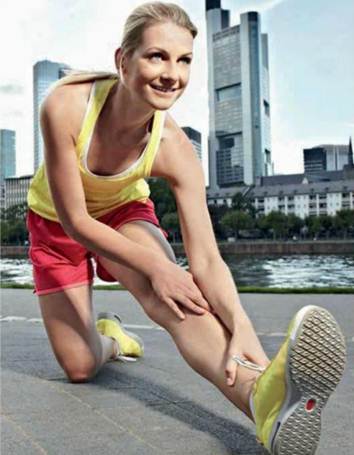Running offers mental and social rewards, as well as
getting you fit fast.

Running is simple: you can do it anywhere,
at any time, it can help you find a social outlet or solace, and as you learn
to set goals and bask in the glory of achieving them, it won’t just improve
your fitness; it can change your life.
It’s a goal!
According to race organizers,
half-marathons are the new fun run. At the Sydney Running Festival, in the past
five years, half-marathon entries have risen by more than 170 per cent – and
women are definitely boosting those numbers. Only one third of the
half-marathon field was made up of women in 2005, now it’s 44 per cent. And, in
fact, many race organizers report that for the first time last year, women
outnumbered men in many races.
Clearly we all want a challenge, and if
that challenge also helps us lose weight or raise money for charity, so much
the better.
Certainly, entering a race of any distance
is a good way to set a goal and so improve your running, and you don’t need to
be a speedster to do it. There’s nothing wrong with run-walking if you’re a
beginner or with talking short walk breaks, especially at drink stations,
points out O’Brien. “You’ll go further, recover faster and probably enjoy it
more. The important thing is to participate.”
To find a race
Try coolrunning.com. They list everything
from fun runs to “ultra runs” in every State and Territory.
Getting support
Troop believes it’s important not to
overcomplicate running. Its beauty is its simplicity, but it’s good to have a
guide on how much and how fast so you avoid injuries.
The best online coaches usually require
payment but you’ll get top advice, feedback and have your questions answered.
Check out
Lee Troop: www.marathontrainingschedule.com
Pat Carroll: www.patcarroll.com
CoolRunning CoolRunning.com

Avoiding injury
Rule number one? Never increase your weekly
distance by more than 10 per cent. “I’ve seen many runners get into trouble
increasing distance too quickly,” says O’Brien.
As you get fitter it’s natural to want to
run more but it’s too hard on your body. Instead, Spin classes, deep-water
running, weights, Pilates and yoga classes are all great complementary workouts
for runners. Rest and recovery days are essential.
As a rule, if you’ve never run before and
want to enter a 5km or 10km race, allow between eight to 14 weeks to train. If
you’re already running 10km regularly and have a reasonable level of fitness,
allow 12 to 16 weeks a half or full marathon.
If you are getting niggling injures see a
physic who can either give you advice on Pilates, massage, stretches or gym
work to strengthen deficiencies or can refer you to a podiatrist to get
orthotics, says Troop.
Run on grass or gravel when possible.
Pounding pavements puts too much stress on knees, shins and the lower back.
Hydration & nutrition
Watch your weight
If you know you’re carrying a few extra
kilos, review your diet, says Radcliffe, and cut out unhealthy snacks and
sweets. Dropping a couple of kilos will give you an easier run. On the flip
side, if you suspect your nutritional intake is low, you must eat more to cope
with harder training.
Hydration levels
Even a state of mild dehydration can reduce
an athlete’s performance by 10 to 20 per cent. Multiply your weight in kilos by
.033 and the figure you’ll get is your optimum daily intake of non-caffeinated
fluid. To that you should add an extra liter for every hour you run.